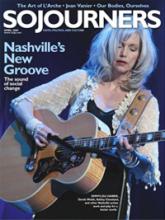When I was a child my mom used to read me stories of Christian martyrs from an Anabaptist history book called Martyrs Mirror. As I have returned to these often gruesome stories at various stages of my life, I find in them an alternate version of church history that contrasts with the history taught in many churches and schools.
Similarly, in A People’s History of Christianity, Diana Butler Bass has spun another alternate history of the church. Taking inspiration from Howard Zinn’s book A People’s History of the United States, which offers a new slant on U.S. history, Bass presents here a fresh version of church history that stands in contrast to the militant Christianity she calls “Big C” Christianity, in reference to the key elements of that history: Christ, Constantine, Christendom, Calvin, and Christian America.
Bass’s excellent introduction on the role of history in the church nicely frames the rest of the book. Here she focuses on the “spiritual amnesia” of the present age and calls the church instead to be a “community of memory.” The structure of the history Bass covers in the remainder of the book is a standard one, dividing the Christian era into five smaller periods: early Christianity, medieval Christianity, the Reformation, the modern era (1650-1950), and the contemporary era (after 1945).
Read the Full Article
